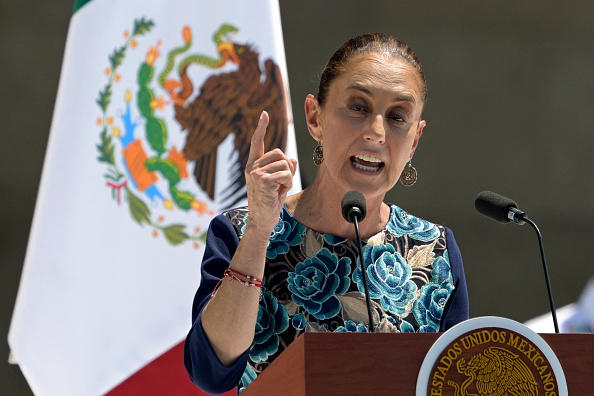U.s. Military In Mexico

In a significant historical event, the U.S. military's involvement in Mexico during the early 20th century played a crucial role in shaping the relationship between these two neighboring nations. This article delves into the specifics of this military engagement, exploring its causes, the extent of U.S. military presence, and the long-lasting implications it had on Mexico's sovereignty and the dynamics of the U.S.-Mexico border.
The Origins of U.S. Military Presence in Mexico

The U.S. military’s intervention in Mexico can be traced back to the Mexican Revolution, which began in 1910. This tumultuous period of Mexican history saw the overthrow of the long-ruling dictator, Porfirio Díaz, and the rise of various revolutionary factions vying for power. The U.S., concerned about the stability of its southern neighbor and potential threats to its economic interests, became increasingly involved in the Mexican conflict.
One of the key incidents that led to direct U.S. military intervention was the Tampico Affair in 1914. U.S. naval personnel were detained by Mexican authorities, leading to a diplomatic crisis. In response, U.S. President Woodrow Wilson ordered the occupation of the Mexican port city of Veracruz, an action that further strained relations between the two countries.
Extent of U.S. Military Operations

The U.S. military’s presence in Mexico during this period was significant, albeit often conducted under the guise of protecting American interests and citizens. The U.S. Army and Navy carried out numerous operations, including the Mexican Expedition of 1916-1917, also known as the “Punitive Expedition”. This campaign, led by General John J. Pershing, aimed to capture the revolutionary leader Pancho Villa, who had launched raids into U.S. territory.
The Punitive Expedition involved over 10,000 U.S. troops and extended over 500 miles into Mexican territory. Despite the scale of the operation, Villa remained elusive, and the expedition ultimately failed to capture him. However, it did lead to a significant military buildup along the U.S.-Mexico border, with the establishment of numerous military posts and the deployment of thousands of troops.
In addition to the Punitive Expedition, the U.S. military also conducted several smaller-scale operations, often in response to border incursions or to protect American-owned businesses and assets in Mexico.
The Battle of Carrizal
One notable event during the Punitive Expedition was the Battle of Carrizal in 1916. This engagement between U.S. troops and Mexican forces resulted in heavy casualties on both sides and further escalated tensions between the two nations. The battle highlighted the complexity of the situation, as the U.S. found itself in a conflict with a nation it was also trying to stabilize.
| Battle of Carrizal | Casualties |
|---|---|
| U.S. Military | 16 killed, 23 wounded |
| Mexican Forces | 16 killed, 21 wounded |

Impact on Mexico’s Sovereignty
The U.S. military’s presence in Mexico had profound effects on the country’s sovereignty and national identity. Mexican citizens viewed the occupation as a violation of their independence and a challenge to their right to self-determination. The Mexican government, particularly under the presidency of Venustiano Carranza, was vocal in its opposition to U.S. intervention.
The military presence also exacerbated existing social and economic inequalities in Mexico. The U.S. intervention often favored certain factions or interests within Mexico, further dividing the country and prolonging the revolutionary conflict. The presence of U.S. troops in Mexican territory was seen as a symbol of foreign intrusion and a threat to Mexican autonomy.
Long-Term Implications for U.S.-Mexico Relations
The U.S. military’s involvement in Mexico had lasting consequences for the relationship between the two nations. It fostered a deep-rooted suspicion and resentment among many Mexicans towards the U.S., which has persisted to some extent even today.
On the other hand, the U.S. gained a greater understanding of the complexities of Mexican politics and society, which influenced its future foreign policy decisions. The experience in Mexico also shaped the U.S. military's approach to international interventions, emphasizing the need for a delicate balance between military force and diplomatic efforts.
The U.S.-Mexico border, as a result of these historical events, became a site of significant military and diplomatic activity. The border region witnessed the establishment of numerous military bases and the implementation of stricter border controls, which continue to shape the cross-border dynamics today.
Modern Border Security
The legacy of the U.S. military’s presence in Mexico can be seen in the current border security measures and the ongoing debate surrounding immigration and trade policies. The events of the early 20th century laid the foundation for the complex relationship that exists between the U.S. and Mexico today.
What was the primary reason for U.S. military intervention in Mexico during the early 20th century?
+The U.S. military intervention was primarily driven by concerns over stability in Mexico, which was undergoing a revolutionary period. The U.S. sought to protect its interests, citizens, and economic assets in the region, leading to direct military involvement.
How did the U.S. military’s presence impact Mexico’s revolution?
+The U.S. military’s presence often favored certain factions, which prolonged the revolution and exacerbated social and economic inequalities. It also served as a rallying point for Mexican nationalists, further dividing the country.
What were the long-term consequences of the U.S. military’s intervention for Mexico’s sovereignty?
+The intervention had a profound impact on Mexico’s sovereignty, with many Mexicans viewing it as a violation of their independence. It fostered a deep-rooted suspicion of U.S. intentions and shaped Mexico’s national identity and foreign policy for decades to come.



